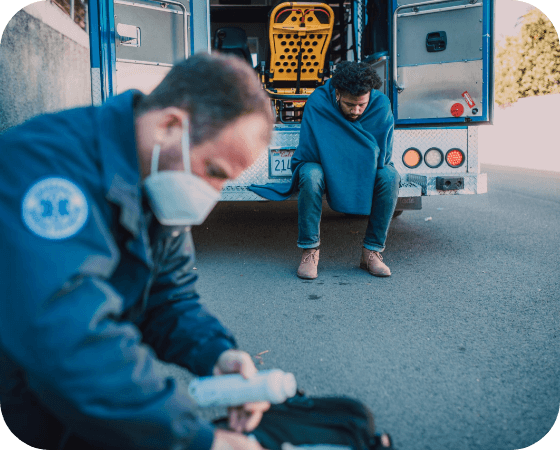GAO Report Shows Impact of Non-Compete Agreements on Health Care Workers
Many health care workers face restrictions on changing jobs due to non-compete agreements (NCAs), according to a new report from the Government Accountability Office (GAO). More than 57% of health care and social assistance workers employers surveyed in 2022 by the GAO reported that they use NCAs for at least some of their workers. To compile the report, GAO surveyed 446 private sector employers and 25 state attorney general offices. Among the reasons health care employees cited in the report for requiring NCAs are the protection of intellectual property and trade secrets, and minimization of turnover. The report’s release comes as the Federal Trade Commission (FTC) works to finalize rulemaking that could bar many employers from imposing NCAs on workers. While health care providers say NCAs are necessary to retain workers, health care workers say the agreements limit career growth.
McCarthy Speaks Positively on Debt Ceiling Negotiations amid Concerns
Speaker Kevin McCarthy (R-CA) spoke of recent debt talks with the White House in a more favorable light, saying he sees “the path that we could come through.” McCarthy also remarked that top negotiators could reach an agreement in principle by this weekend. However, signs that negotiations are moving forward have sparked concerns from some House Republicans, particularly Freedom Caucus members who say they won’t support any agreement to raise the debt ceiling without significant budget cuts. Similarly, several Democratic members of Congress reacted negatively to news that President Joe Biden could be open to enhanced Medicaid work requirements as part of a possible deal. For instance, House Democratic Leader Hakeem Jefferies characterized changes to work requirements as a “nonstarter.”
Biden Nominates Bertagnolli to Lead NIH
President Joe Biden announced his intent to nominate National Cancer Institute (NCI) Director Dr. Monica Bertagnolli to be the Director of the National Institutes of Health. News broke last month that the administration was close to nominating the NCI chief for the top job at NIH. However, several issues caused the administration to delay a final decision on Bertagnolli, including Rochelle Walensky’s unexpected resignation as Director of the Center for Disease Control and Prevention and concerns from Sen. Bernie Sanders (I-VT) on the NCI Director’s commitment to lowering drug prices. Bertagnolli will now face Senate confirmation hearings this summer that will likely focus on several contentious issues, including NIH funding amid a difficult budgetary environment, the origins of COVID-19, and the pandemic response. A Wyoming native, Bertagnolli was the chief of surgical oncology at Dana-Farber Brigham Cancer Center before becoming the NCI chief in October 2022.
Appeals Court Preserves ACA’s Preventative Coverage Requirements
Employers are still required to fully cover the cost of specified preventive health care services, according to a US Court of Appeals for the Firth Circuit order issued on Monday. The order overturns a March 2023 ruling by Judge Reed O’Connor of the Federal District Court for the Northern District of Texas that would have eliminated coverage of most preventive health care services mandated by the Affordable Care Act (ACA). Some 100 million people use ACA-covered preventative health services each year, which range from screenings for cancer and depression to drugs that prevent HIV transmission. O’Connor, who ruled the ACA to be unconstitutional in a 2018 decision, argued that the US Preventative Services Task Force does not have the constitutional authority to determine which health care services should be considered preventative. The appeals court’s order will remain in effect while the case works through the appeals process
Gallup: Depression Rates at All-Time High
The percentage of American adults who have been diagnosed or treated for depression reached a record high in 2023, according to a new poll from Gallup. The poll found 29% of US adults report being diagnosed with depression at some point during their lifetimes, a nearly 20% increase from 2015. Additionally, the survey found more than 17% of adults were either have or are currently being treated for depression. According to the poll, women and young adults saw depression rise at higher rates compared to other groups. While depression had been rising in the US for the past several years, researchers say the impact of the COVID-19 pandemic on social isolation, loneliness, and psychological exhaustion has likely played a role in boosting depression diagnoses and treatment. To conduct the poll, Gallup surveyed 5,167 adults between February 21-28.
ICYMI: Portrait of Former Speaker Paul Ryan Unveiled at Capitol
Key members of Congress gathered in the Capitol’s Statuary Hall on Wednesday for a ceremony to unveil a portrait of former Speaker Paul Ryan (R-WI). First elected to Congress, Ryan served as speaker from 2015-2019, where he played a pivotal role in enacting major tax reform legislation. The event was attended by fellow former Speakers Nancy Pelosi (D-CA), Newt Gingrich (R-GA) and John Boehner (R-OH). Current Speaker Kevin McCarthy (R-CA) also attended to provide brief remarks on Ryan’s commitment to addressing the national debt, which is timely given McCarthy’s role in negotiations to raise the debt ceiling.



